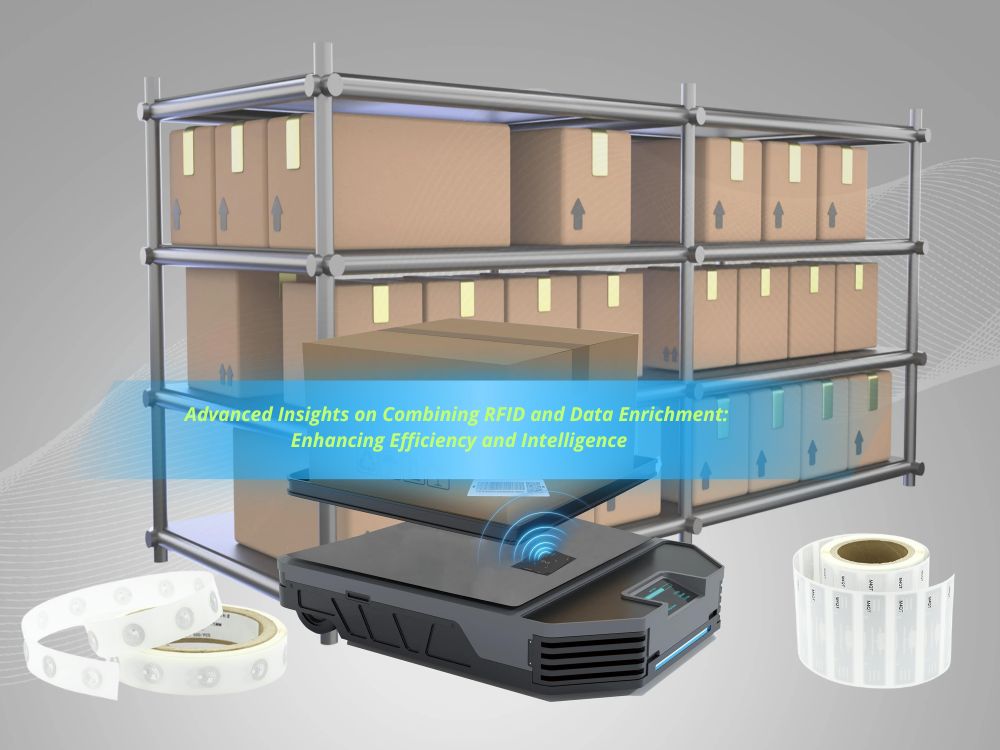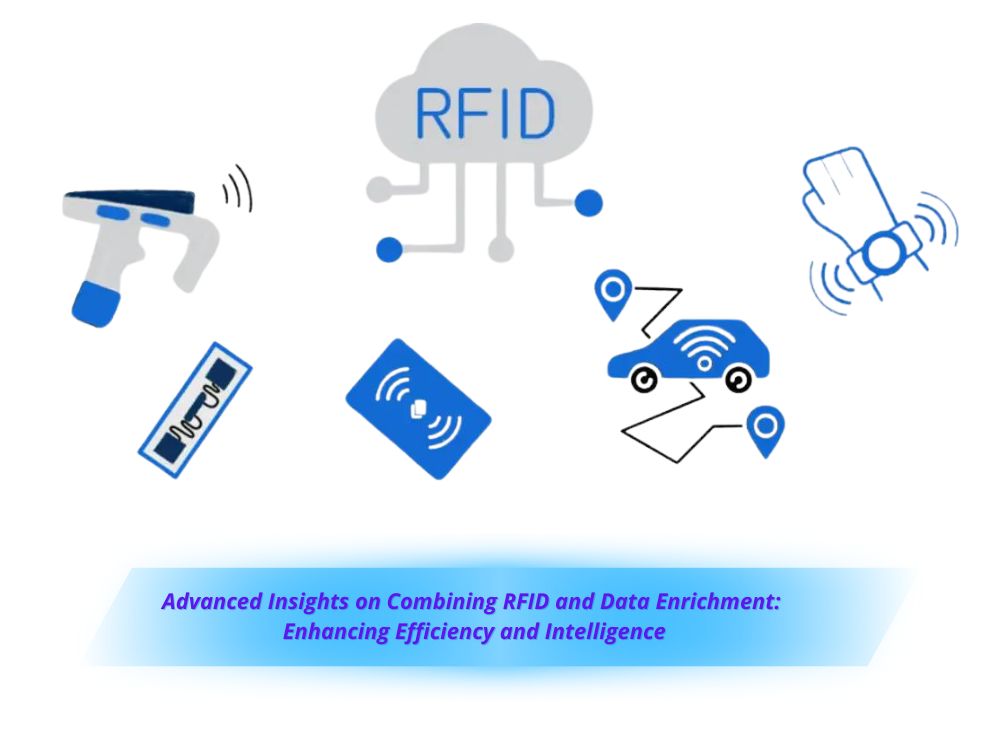
Advanced Insights on Combining RFID and Data Enrichment: Enhancing Efficiency and Intelligence
Table of Contents
Summary
This synergy not only automates processes but also provides deeper insights, allowing businesses to operate with greater efficiency and precision. This article explores the scientific and technological underpinnings of RFID and data enrichment, illustrating their combined potential across various sectors.

Overview of RFID and Data Enrichment
Data enrichment involves augmenting existing data with additional, relevant information from various sources. When paired with RFID technology, data enrichment allows businesses to not only track assets but also derive meaningful insights from the data collected. This combination is particularly valuable in marketing, fraud prevention, inventory management, and other applications where real-time data and context are crucial.
The Fundamentals of Data Enrichment
What is Data Enrichment?
Data enrichment refers to the process of enhancing existing data by adding more information from internal or external sources. This process involves drawing data from various databases—whether open-source intelligence (OSINT) or proprietary systems—to fill in gaps or add context to a single data point.
- Primary Data:Basic information like email addresses, phone numbers, or IP addresses.
- Enriched Data:Additional details derived from the primary data, such as social media history or geographic location.
Data enrichment is a powerful tool for businesses, enabling them to understand their customers better, personalize marketing strategies, and detect fraudulent activities.
Aspect | Description |
Primary Data | Basic information collected, such as email addresses and phone numbers. |
Enrichment Sources | External databases, social media, OSINT, or company records. |
Applications | Fraud detection, customer segmentation, RFID tag data enhancement. |
Applications of Data Enrichment in Various Domains
Fraud Prevention: Enhancing Security Through Data Enrichment
Data enrichment plays a crucial role in fraud detection by providing additional information that helps identify suspicious behavior.
- Primary Data Collection:During customer onboarding, businesses gather basic data like email addresses or IP addresses.
- Enrichment Process:This data is enriched with information from open sources, revealing whether the phone number is real, disposable, or linked to a suspicious digital footprint.
- Outcome:The enriched data allows businesses to detect fraud patterns and take preventive measures.
For example, reverse phone lookup tools can identify whether a phone number is associated with fraudulent activities, helping businesses protect their assets.
Marketing: Personalizing Customer Interactions
In marketing, data enrichment enables better customer segmentation and personalized communication.
- Segmentation:By enriching primary data with additional details, businesses can group customers based on shared characteristics.
- Targeted Marketing:For instance, knowing whether a customer’s phone number is linked to streaming services can help tailor advertisements to their interests.
- Influencer Identification:High-value customers with significant social media influence can be identified and engaged for product promotions.
Customer segmentation through data enrichment not only improves marketing efficiency but also enhances customer satisfaction.
The Role of RFID in Data Enrichment
RFID technology, known for its ability to track assets in real-time, can be significantly enhanced through data enrichment. Unlike barcodes, RFID tags have read and write capabilities, allowing for continuous data updates.
RFID in Inventory Management
RFID tags, when combined with data enrichment, provide a dynamic way to manage inventory.
- Real-Time Updates:For instance, in retail, RFID tags can be updated with new pricing information without replacing the tag.
- Enriched Data:RFID tags can also store enriched data, such as the weight of an item, enabling more efficient inventory control.
RFID in Service Industries
RFID tags are increasingly used in service industries, such as hotels and libraries, where enriched data can enhance customer experiences.
- Hotel Management:In luxury hotels, RFID-enabled room cards can be enriched with guest information, streamlining check-ins and providing personalized services.
- Library Services:RFID tags on books can be enriched with data from the library’s database, allowing customers to check out books via self-service kiosks and access additional information about the author or related books.

Advancing with RFID and Data Enrichment
The integration of RFID and data enrichment is transforming how businesses manage assets and interact with customers. This synergy offers significant advantages, from automating inventory management to enhancing security and personalizing customer experiences.
Future Potential
As RFID technology becomes more affordable, its integration with data enrichment will likely expand across various sectors, from logistics to healthcare. The ability to continuously update RFID tags with enriched data opens up new possibilities for real-time asset tracking and management.
Conclusion
RFID and data enrichment together offer a powerful combination for businesses looking to enhance efficiency and intelligence. Whether it’s preventing fraud, improving marketing strategies, or managing inventory, the applications are vast and impactful. By leveraging the latest advancements in RFID and data enrichment technologies, companies can stay ahead in an increasingly data-driven world.
Comments
Hot Products

What Is RFID Waste Management
Imagine a city where every trash bin speaks — not literally — but through a tiny chip that tells the system when it’s full, when it’s emptied, and where it went. That’s what RFID waste management is doing today.

What are Bolt Seals and their Applications? | Complete Guide
In global trade and logistics, bolt seals play a crucial role in ensuring cargo security and compliance. These small but powerful devices are designed to lock shipping containers, trailers, and cargo doors with a tamper-evident mechanism.

What is an RFID Card Protector? Benefits, Use Cases, and Buying Guide
RFID technology (Radio Frequency Identification) is everywhere: in your credit cards, ID badges, transit passes, hotel room keys, and more. It offers speed and convenience, but it also opens the door to a new kind of digital theft called “skimming.” That’s where an RFID card protector comes in.

RFID Wristbands for Events: Bulk Buying Guide for Organizers
RFID wristbands for events are becoming the go-to solution for organizers who need faster entry, fraud prevention, and cashless payments at concerts, festivals, and sports venues. Unlike paper tickets or QR codes, these smart wristbands use embedded chips to streamline access, secure transactions, and improve the guest experience.

How RFID Tag on Windscreen Improves Vehicle Access Control and Toll Systems
In today’s fast-paced world, vehicle identification needs to be quick, secure, and contactless. An RFID Tag on the Windscreen provides exactly that — a reliable way to manage toll collection, parking, and gated access without stopping vehicles.

The Benefits of RFID Linen Tags in Commercial Laundry
Managing laundry in hospitals, hotels, or large laundry services is a big job. Each day, thousands of sheets, towels, and uniforms are washed, sorted, and sent back out. But problems like lost linens, sorting mistakes, and manual counting can cost companies a lot of money. For example, mid-sized hotels can lose over $200,000 each year from missing linens.
That’s where RFID Linen Tags come in.
Tags
RELATED BLOGS

What Is RFID Waste Management
Imagine a city where every trash bin speaks — not literally — but through a tiny chip that tells the system when it’s full, when it’s emptied, and where it went. That’s what RFID waste management is doing today.

What are Bolt Seals and their Applications? | Complete Guide
In global trade and logistics, bolt seals play a crucial role in ensuring cargo security and compliance. These small but powerful devices are designed to lock shipping containers, trailers, and cargo doors with a tamper-evident mechanism.

What is an RFID Card Protector? Benefits, Use Cases, and Buying Guide
RFID technology (Radio Frequency Identification) is everywhere: in your credit cards, ID badges, transit passes, hotel room keys, and more. It offers speed and convenience, but it also opens the door to a new kind of digital theft called “skimming.” That’s where an RFID card protector comes in.




